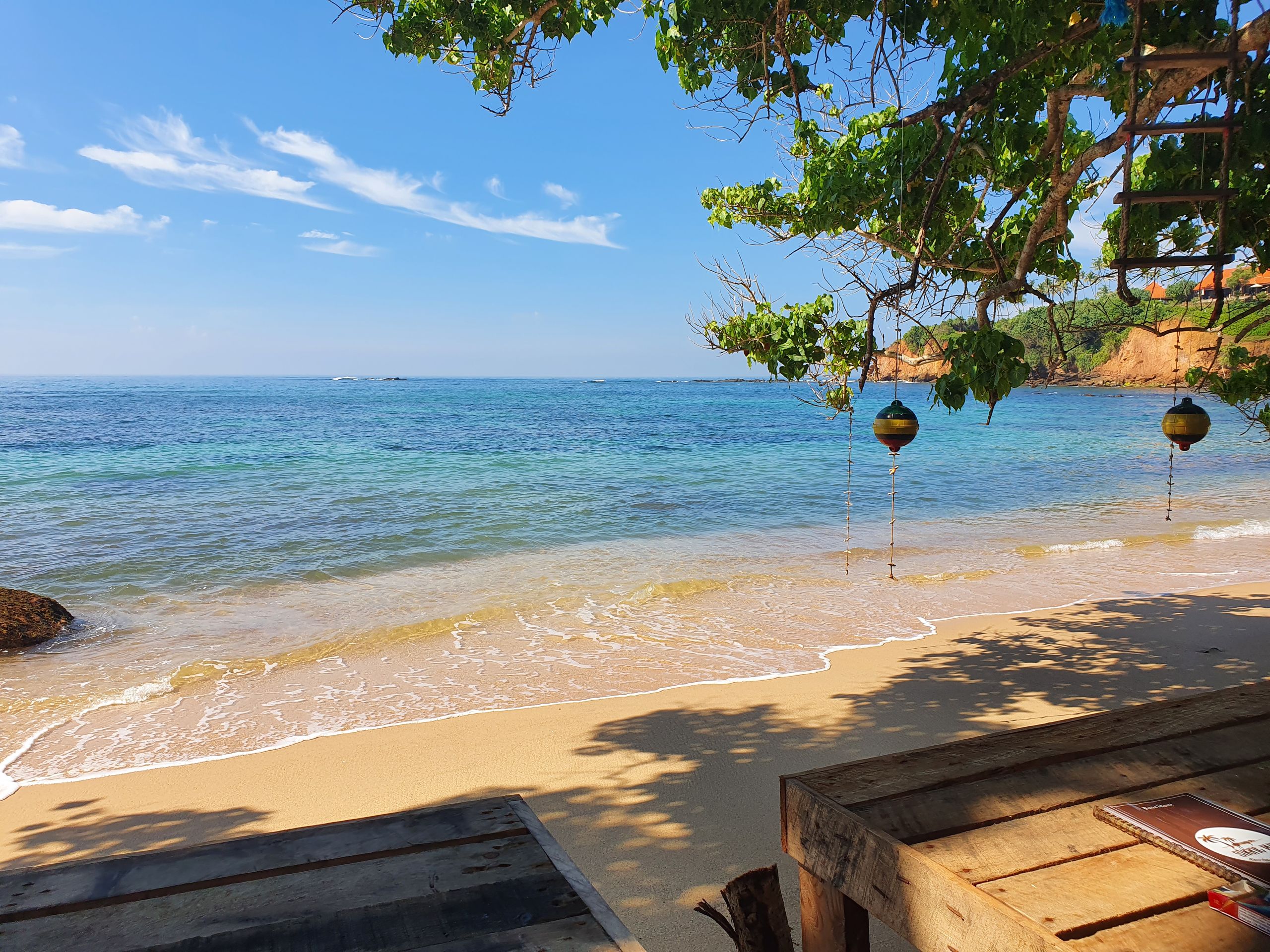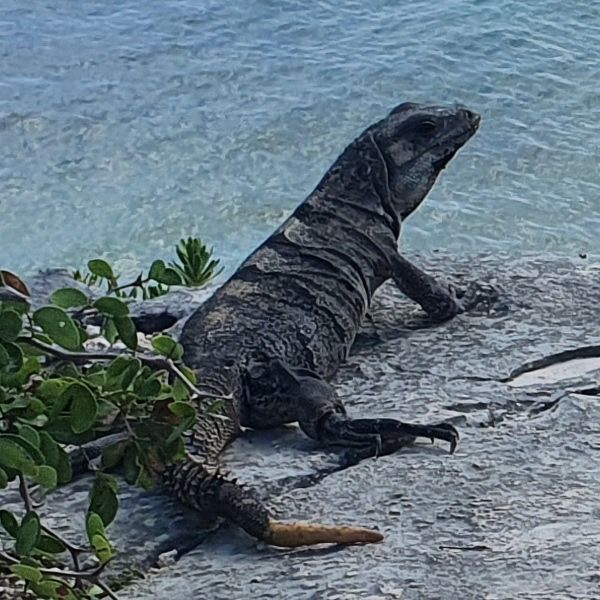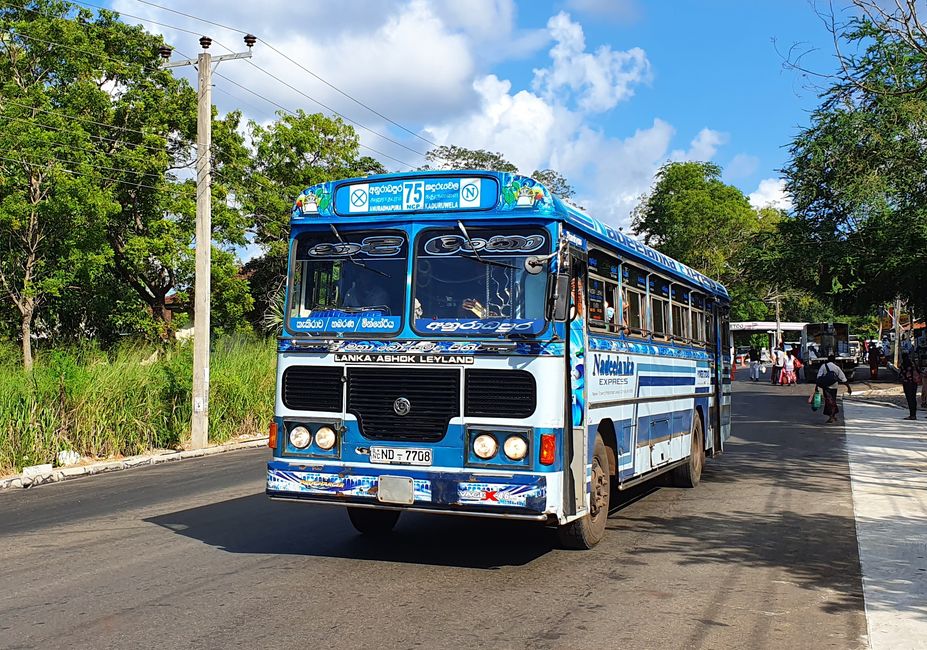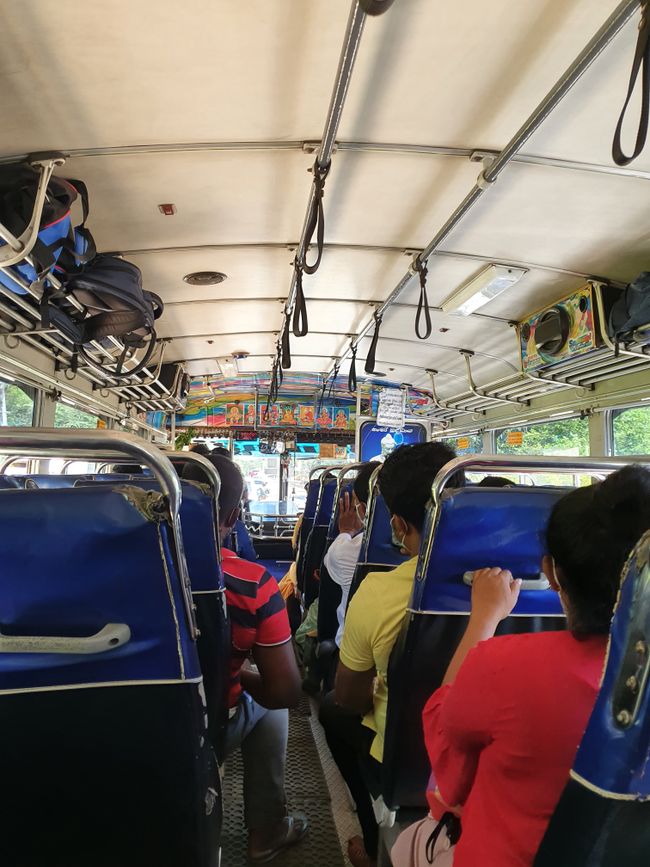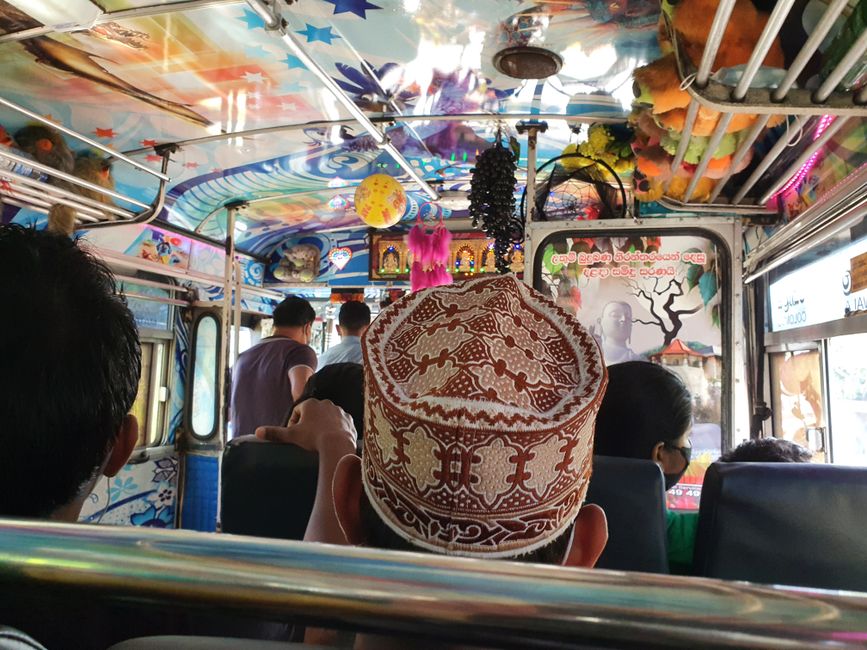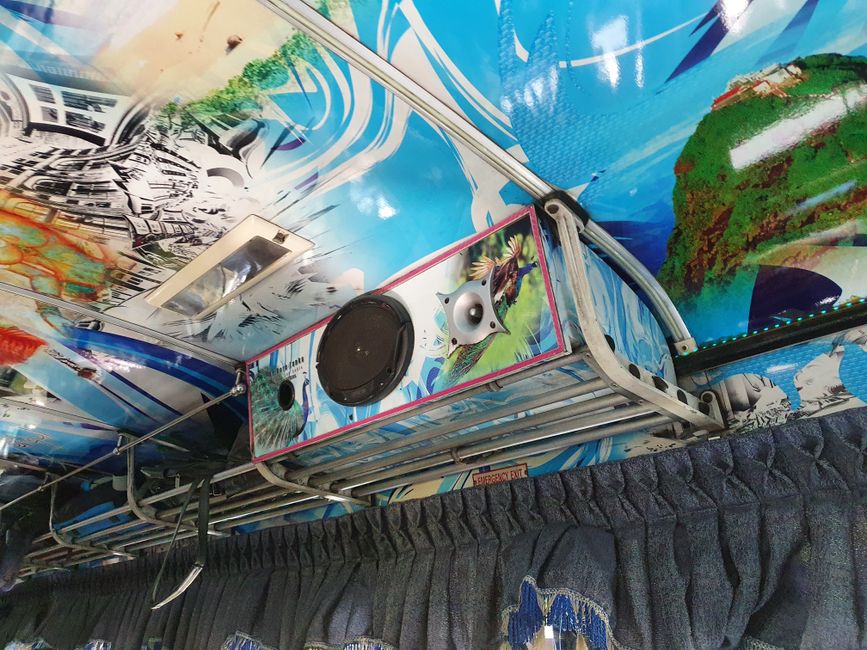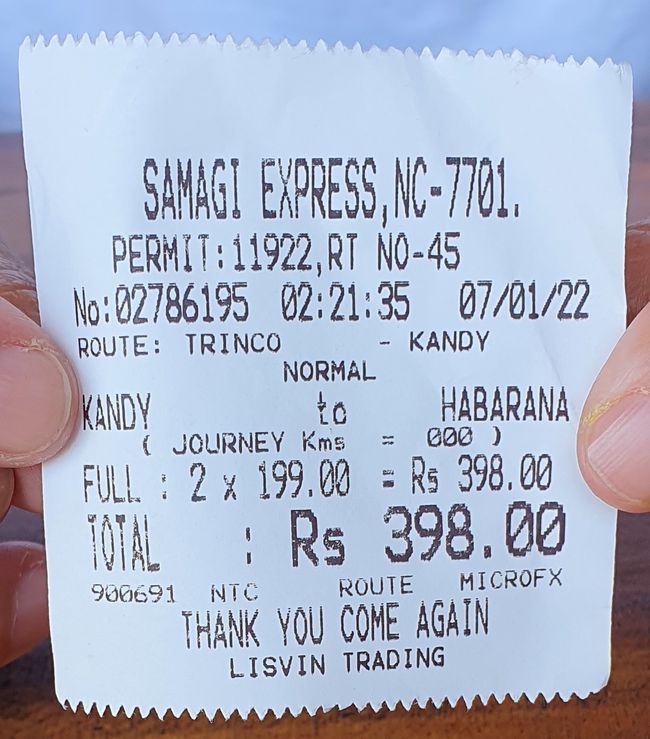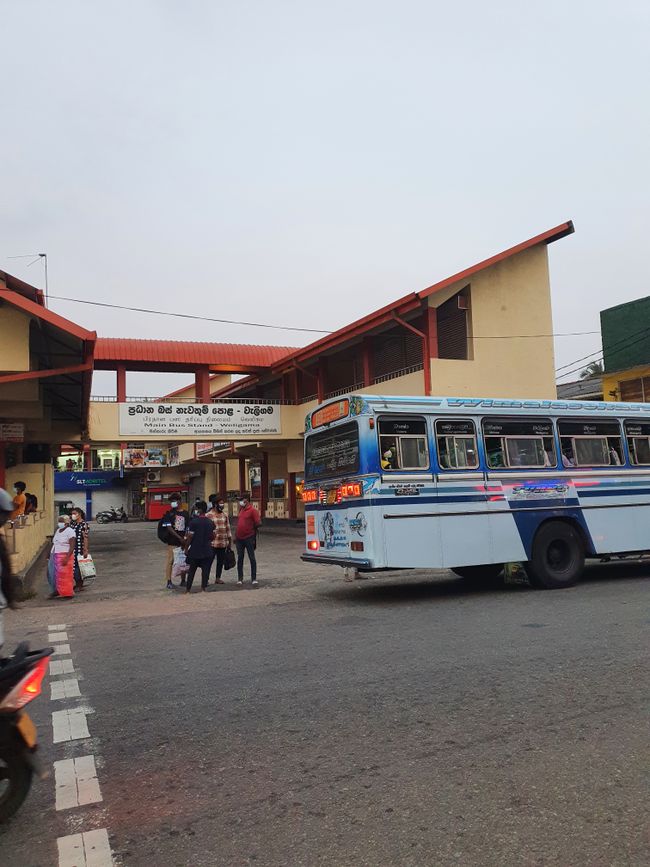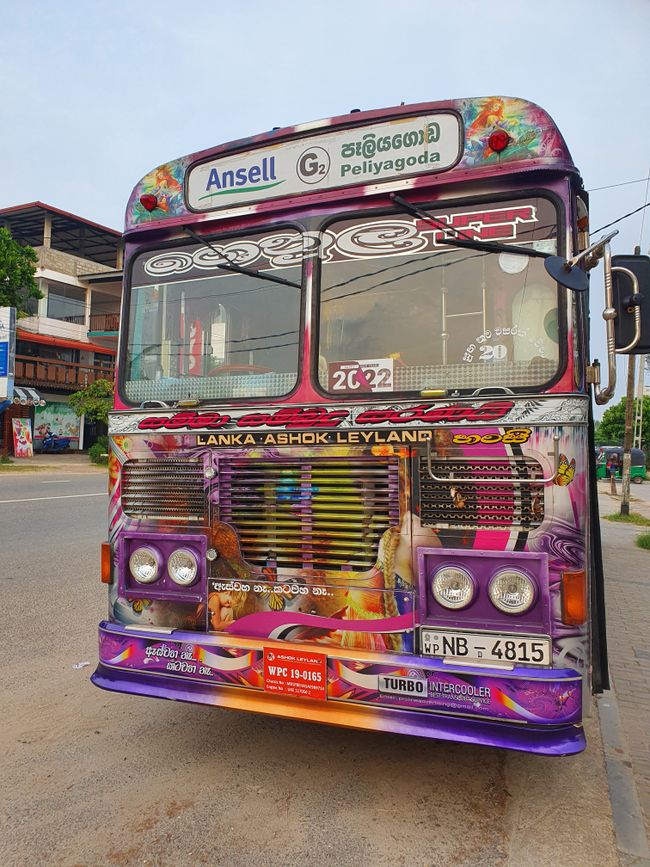Traveling around Sri Lanka by bus
게시됨: 15.04.2022
뉴스레터 구독
The bus is the most popular means of transportation in Sri Lanka. Buses operate frequently and go almost everywhere. With a little background knowledge, it can be less stressful, even though not more comfortable.
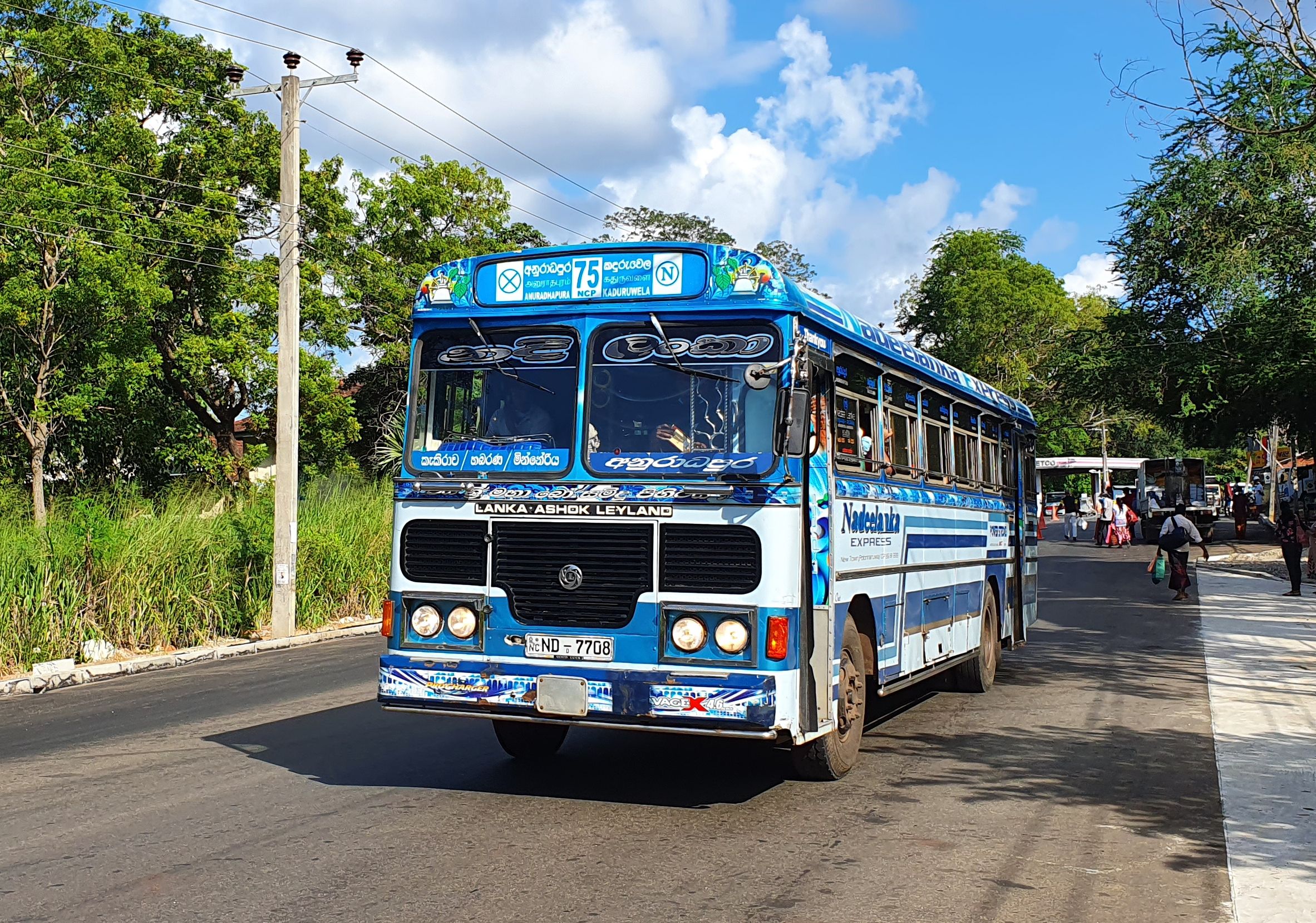
What types of buses are there?
In Sri Lanka, there are also modern, air-conditioned long-distance buses, some of which can be booked online. However, they only operate on a few very popular routes and not very frequently. We rarely saw them and did not use them either.
All other long-distance buses are mostly of the same design (manufactured by Lanka Ashok Leyland, as shown in the image above) and are not air-conditioned. Air conditioning is not really necessary because the windows are usually open, so the bus is cooled by the breeze.
There are public buses, mostly red in color and often labeled only in Sinhala and Tamil, and private buses, which are more brightly painted. The public buses are operated by either the Sri Lanka Transport Board (SLTB) or a regional transport board. Most buses are operated by private entrepreneurs, who seem to be more interested in keeping customers satisfied. In the current economic crisis, public buses seem to have an advantage because they have better access to diesel fuel.
The buses clearly display the route they serve and the final destinations on the front. The main intermediate stops are indicated on the side windows of the bus.
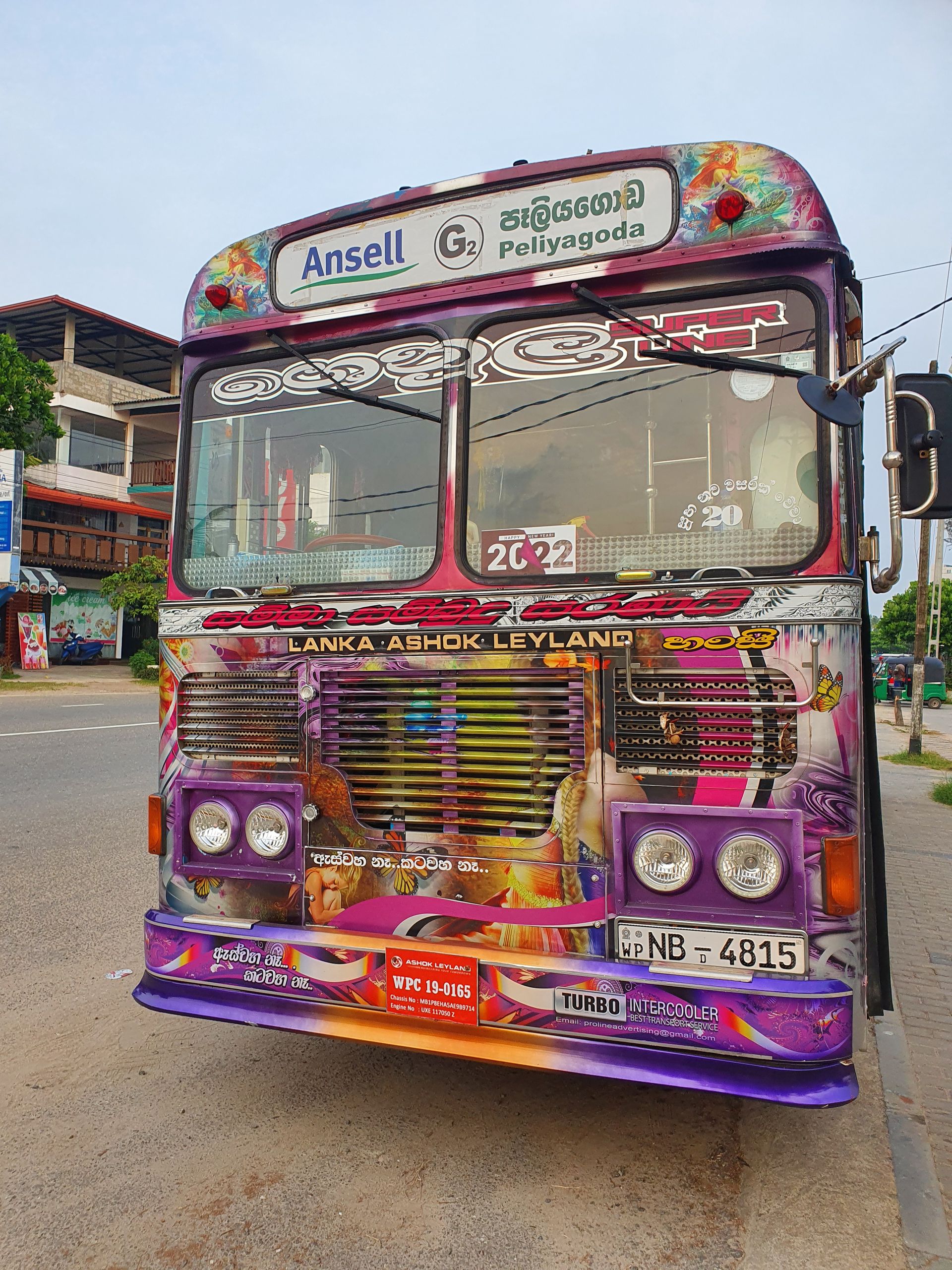
How do you find the right bus?
Google Maps can provide an initial indication of possible routes, although the data is never really accurate. Every somewhat larger city has a bus station. You can go there and inquire about how to reach your desired destination by bus. There is usually a small information booth where someone can provide information in English. Otherwise, you can check which buses depart and which destinations are listed.
There is probably an official file with the official routes and their numbers somewhere in an office in Colombo, but unfortunately, we never found an official and complete plan of the network. Someone has attempted to compile known route numbers on routemaster.lk.
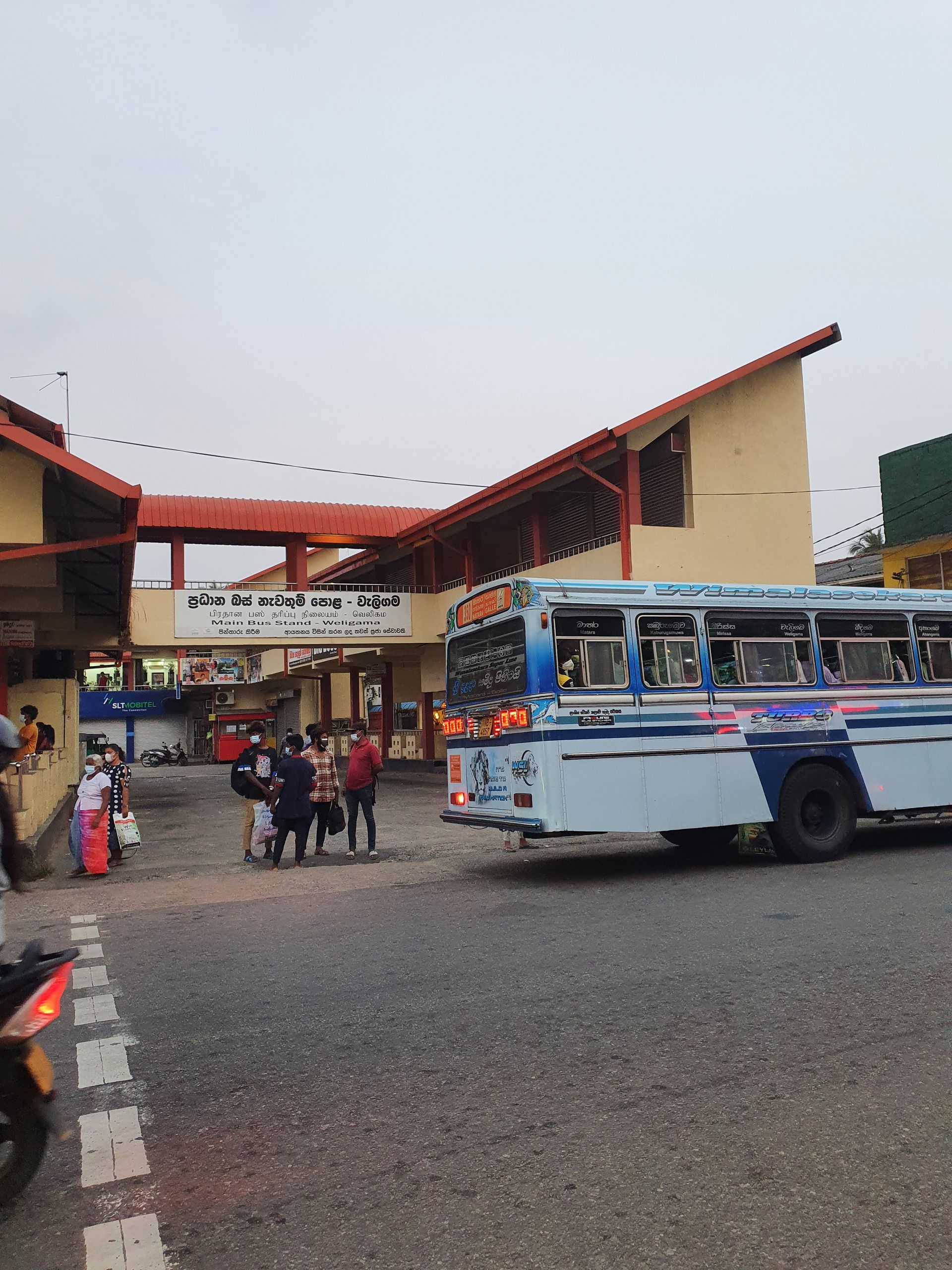
Getting information about connecting services is almost impossible. As a rule of thumb, transfers are always possible in larger cities. So, if in doubt, you can first take a bus to the nearest larger city.
But even if you go to a bus terminal unprepared early in the morning and have no hurry, you will find a way.
If you are in a smaller town that does not have a bus station, you have to check which road leads in the right direction. Then you stand at a bus stop on the correct side of the road and simply take the next bus that goes to your destination. Buses in Sri Lanka operate frequently and do not have a precise timetable. If you are unsure, it is best to tell the bus driver the name of your destination and see how he reacts.
Usually, the conductor at each bus stop will loudly and clearly announce the name of the final stop.
By the way, it is always better to board at the first station on a route because the chance of getting a seat is much higher.
How do you behave on the bus?
You do not pay when boarding because that would hold up the bus for too long. Sri Lankan buses are more efficient than German ones. You immediately look for empty seats or a standing position where you can hold on properly.
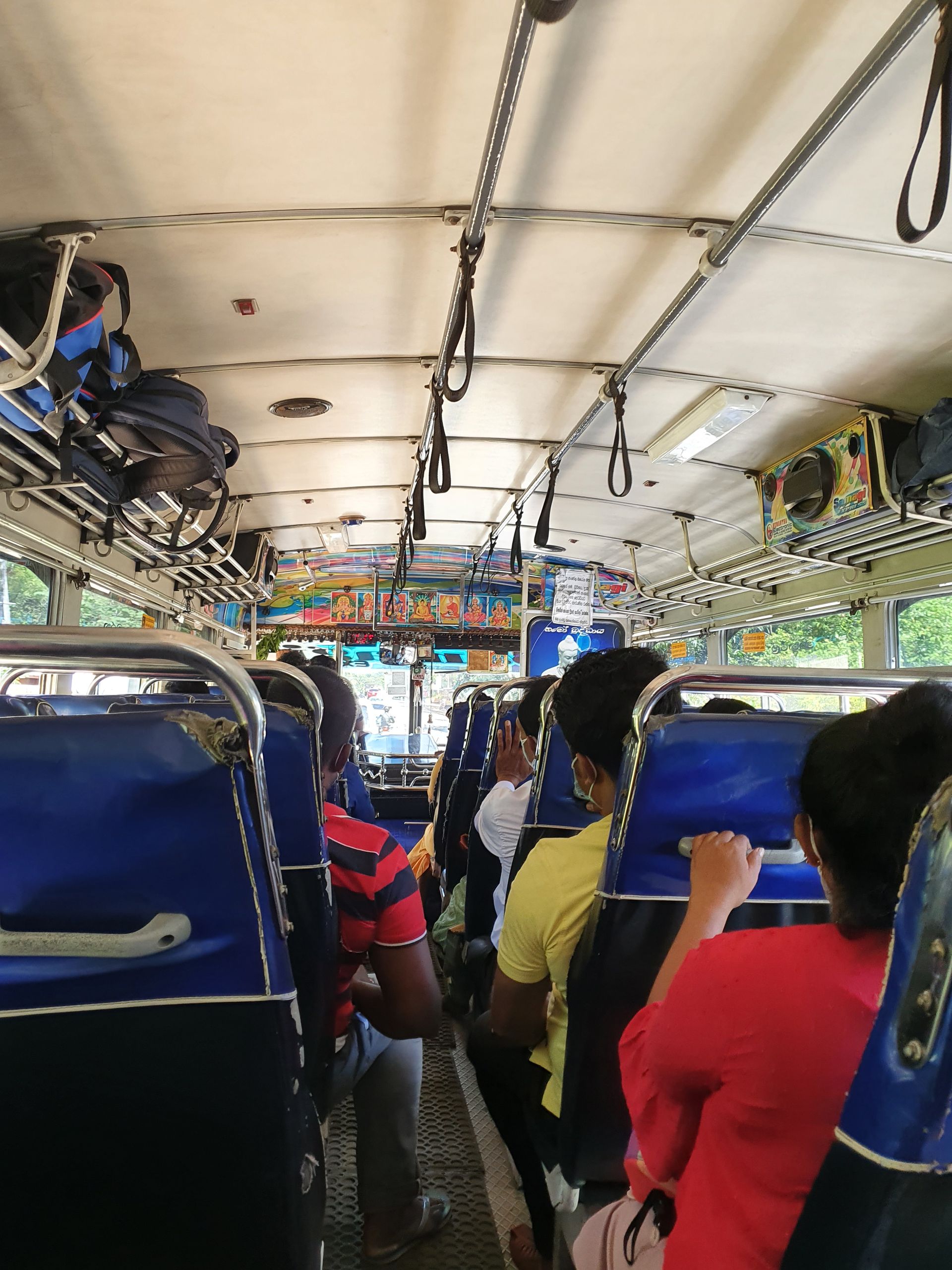
In addition to the bus driver, there is also a conductor who walks through the bus and sells tickets to newly boarded passengers. Sometimes this takes a little time because the conductor has more important things to do, but do not worry, he is keeping an eye on everything and will still collect your fare! The conductor is generally responsible for ensuring that everything runs smoothly, helps passengers get on and off, provides information, and so on.
The front row of seats is usually kept free and reserved for Buddhist monks. If it becomes crowded, you can sit there, but you must stand up if a monk boards. The behavior on the bus is considerate: if an elderly or frail person boards and does not have a seat, you offer yours. We have also experienced cases where, after having to stand for a long time on a route, someone getting off explicitly gave us their seat because we had already been standing for so long.
A Sri Lankan bus usually fills up shortly after the first stop and reaches maximum capacity and beyond. That is also the reason why the prices are so low.
If you remain friendly despite the tight space and crowds, the Sri Lankans will also be friendly.
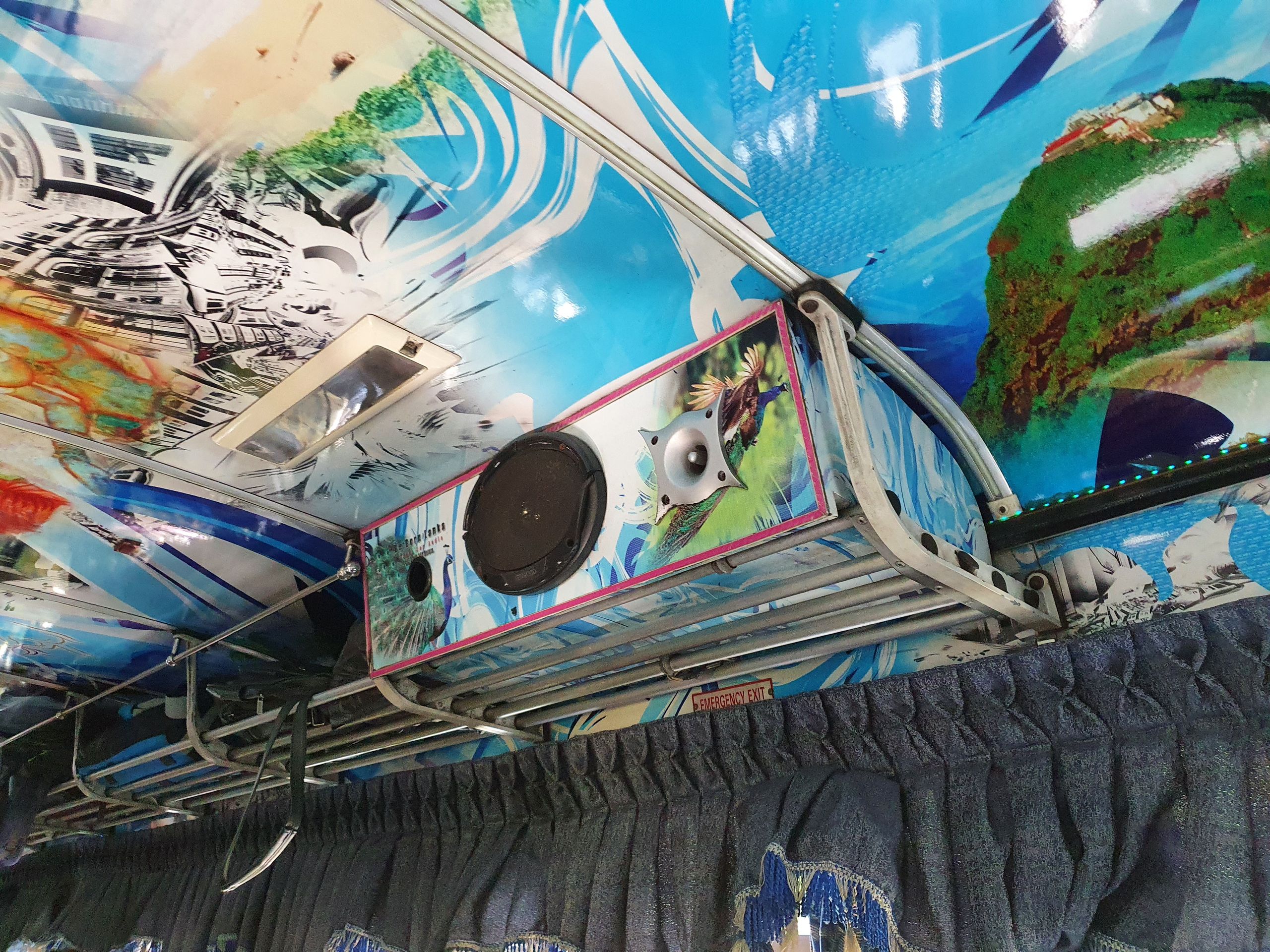
During the journey, you will be entertained with lively Sri Lankan pop music, which is intended to make the trip more enjoyable.
Luggage
Sri Lankans usually do not travel with large pieces of luggage on the bus, and the long-distance buses usually do not have storage space where luggage can be loaded from the side. There is usually space for 2-3 pieces of luggage next to the driver and a small trunk at the rear. If the bus is not too crowded, you can also place a piece of luggage on the seat next to you. Because space is limited, you will be charged for the space your luggage occupies.
When two people have large backpacker backpacks, they are usually charged for a third ticket. This is legal and fair to other passengers. It does not change the fact that it is still very cheap. So, do not get upset.
Two tips regarding the trunk at the rear: It often contains greased or oiled spare parts. Professionals carry a garbage bag to protect their backpack from such stains. In addition, it is not entirely safe as your luggage can be accidentally unloaded for another passenger at an intermediate stop, and before you know it, the bus has driven off without realizing it. The trunk is not the best option, and you should not leave important documents and expensive electronics there.
Food and Breaks
On longer routes, a 10-minute stop is usually made at a 'rest area' around the halfway point (often after about 3 hours). The 'rest area' then has a public toilet and various vendors selling snacks.
It is not possible to get off in between just to use the restroom; you would have to get off completely and take the next bus.
Flying vendors often board and squeeze through the bus to offer their goods. For example, you can buy pre-sliced fruit.
Costs
Bus travel in Sri Lanka is very cheap. In a normal non-air-conditioned long-distance bus, you never pay more than €1 per 100 km.
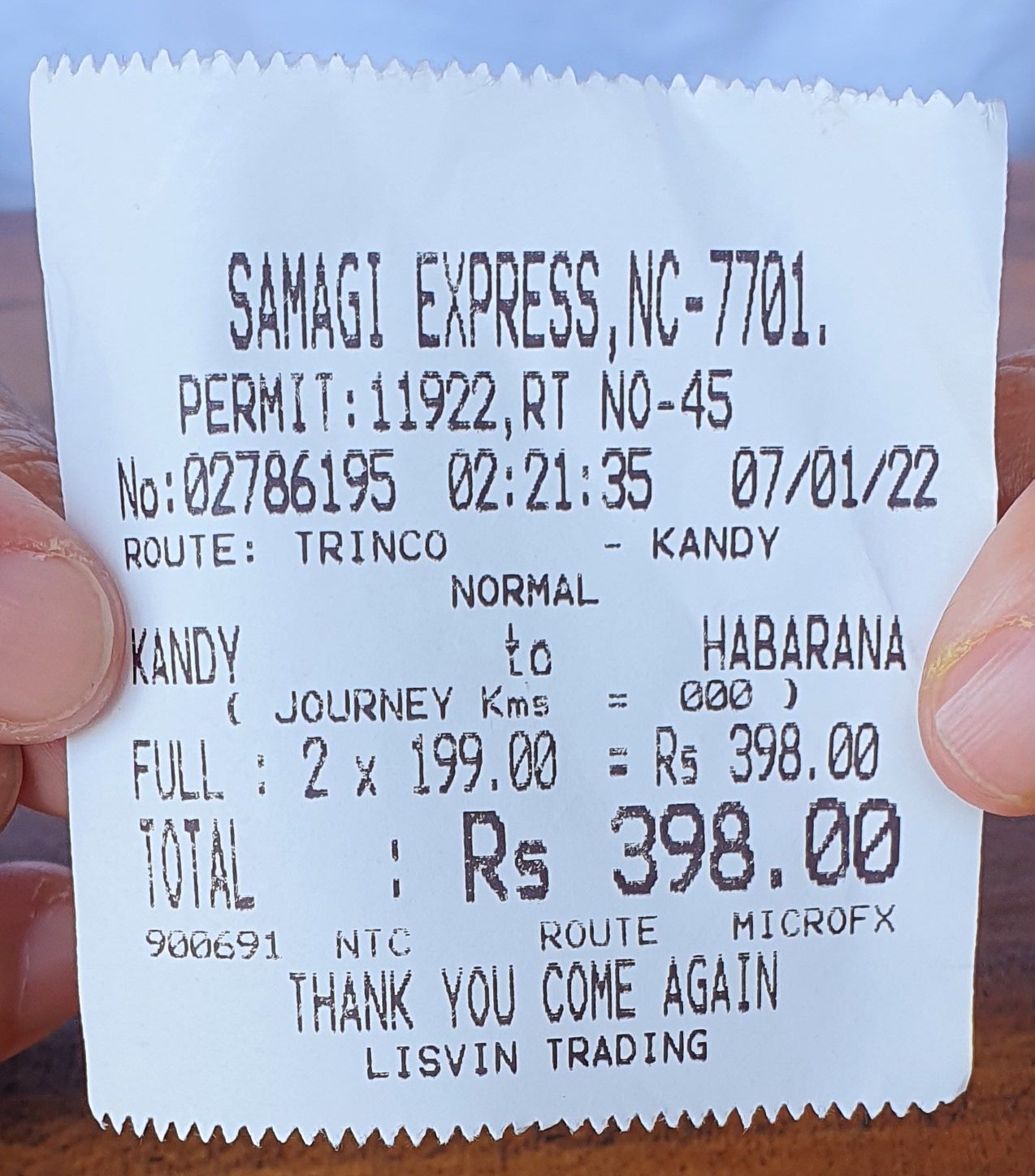
Local transportation is especially cheap, and sometimes you can even get rid of your 10 rupee coins.
Private (colorful) buses are usually twice as expensive as public (red) buses but are generally in better condition. The prices for all buses are publicly regulated, and theoretically, they are also publicly viewable, if the download worked...
By the way, during our entire time in Sri Lanka, the fare was always correctly calculated on the bus. So relax and be kind to the helpful bus staff!
Conclusion
With a bit of resilience and no time pressure, the bus is the first choice for getting from A to B in Sri Lanka. If you embrace it and get a seat, it can even be entertaining.
뉴스레터 구독
답변

스리랑카 여행 보고서
